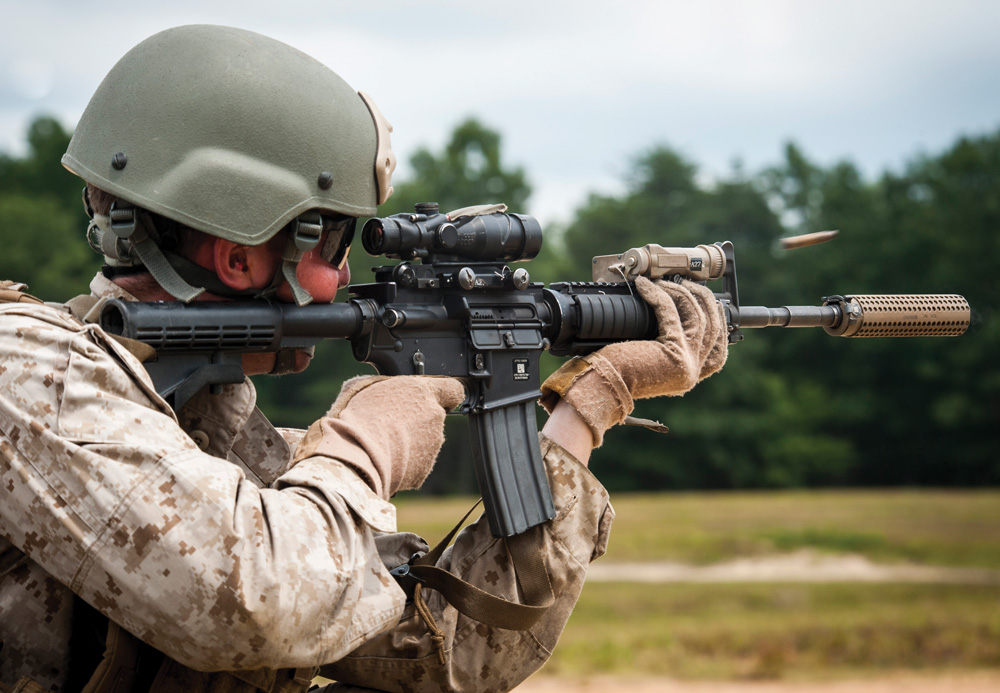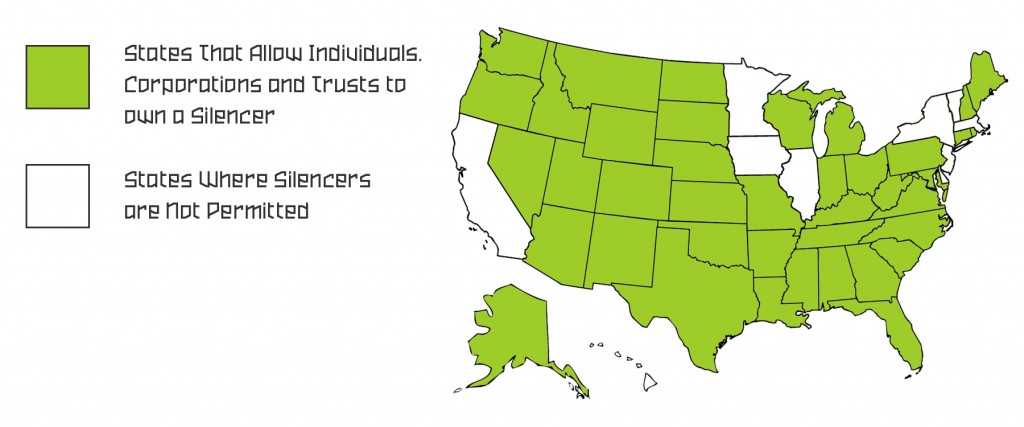NFA firearms (also called NFA weapons) are certain guns and accessories regulated by the National Firearms Act. They are sometimes called “Class 3 weapons.” NFA firearms include all fully automatic and select fire weapons, short barreled rifles/shotguns, and sound suppressors (silencers).
An NFA trust is also known as a Gun Trust. These types of Trusts are specifically tailored to comply with the NFA regulations of Title II items.
Why use a NFA Gun Trust?
-
No CLEO Signature required
-
No Fingerprinting
-
Less hassle
Why Gun Suppressors Are Good
By: Doug Howlett for AR15.com

Suppressed can be a tricky word by its definition and in most uses connotates something that is a negative, such as “the team of lawyers suppressed the evidence” or “the government suppressed the people’s rights.” But I am here to tell you that suppression, provided by gun suppressors, is a very good thing.
I recently enjoyed the opportunity to host a group of friends, mostly women, all of whom either had little experience with firearms or were all-out first time shooters. To help with the instruction and join in on the fun was Oceana Pawn & Gun gunsmith, Kurt Derwort, a former Naval armorer who worked out of Dam Neck in Virginia Beach, Va.
To get the new shooters more comfortable with guns in general and ease them into the experience, after a safety briefing, Kurt pulled out a Ruger .22 with an integrally suppressed barrel. He then guided the newest shooter in the group in how to shoot a gun that reduced the already fairly quiet rimfire to all of the noise of a pellet gun. Not distracted by a loud bang or any type of recoil, she chewed the target up.
Before the afternoon was over, Kurt pulled out a suppressed .223, which tricked out with a bipod, suppressor and variable magnification optic, looks like a pit bull, but as the group of shooters quickly realized, shoots with the gentleness of a golden retriever. Without a doubt, the suppressed guns were the highlight of the day, and for good reason.
Not only did they make the guns less intimidating to the less experienced shooters, but they made shooting in a group much more enjoyable. Hearing protection wasn’t as critical, people could stand in the background and still carry on conversations, Kurt could deliver instruction much more easily, and the neighbors down the street probably appreciated the reduced sound as well.
In Europe, it’s considered impolite to shoot a gun without a suppressor. America would do well to follow their example.
COMMON BARREL MUZZLE THREADS FOR SUPPRESSORS AND ADAPTERS
.22 LR, .22 MAG, .17 HMR
The standard thread for these calibers is 1/2×28.
NOTE: Many .22 barrels have a M8 thread and are typically adapted to 1/2″X28
9mm
- 1/2×28 is the most common thread for 9mm weapons – both carbine and pistol.
- Glock, H&K weapons use the M13.5×1 LH thread pitch
- Sig Sauer and Steyr weapons use the M13.5×1 LH thread pitch
.40 S&W and 10mm
- 9/16×24 is the most common thread pitch for .40 cal weapons.
- H&K weapons use the M14.5×1 LH thread pitch
.45
- .578×28 is the most common thread for .45 cal weapons.
- H&K USP Tactical uses the M16x1 LH thread pitch
- H&K Mark 23 (Socom) uses the M16x1 RH thread pitch
5.56mm (.223)
- AR-15s use the 1/2×28 thread pitch
- Steyr Aug uses the M13x1 LH thread pitch
- H&K weapons use the M15x1 thread pitch
- Ruger Mini uses 9/16×24 thread pitch
7.62mm (.308)
- 5/8×24 is the most common thread for 7.62mm/.308 weapons
- Sako TRG uses the M18x1 thread pitch
- Accuracy International uses the M18x1.5 thread pitch
- AK-47s use the M14x1LH thread pitch
.338LM
- 5/8×24 is the most common thread for .338LM weapons
- Sako TRG uses the M18x1 thread pitch
- Accuracy International uses the M18x1.5 thread pitch
- Desert Tactical Arms uses the 3/4×24 thread pitch
- M=Metric (for example – M13.5×1 LH means that the numbers are metric instead of standard.)
- LH=Left Hand (for example – M13.5×1 LH means the threads are backwards from what you typically expect. This thread pitch would require righty-loosey, lefty-tighty…)
- RH=Right Hand (for example – M16x1RH means the threads work how you typically expect (righty-tighty…). If there is no LH or RH designation – RH is the default.)







Recent Comments